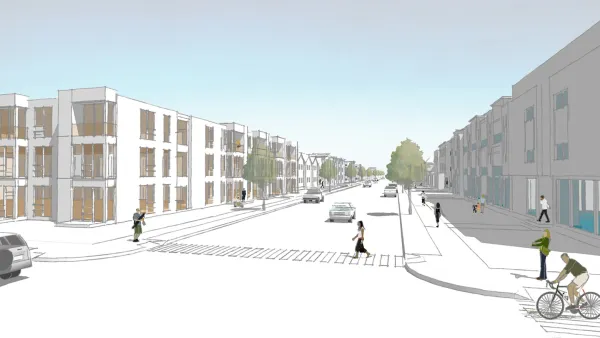The city of Portland is considering a new inclusionary zoning policy, but some believe that inclusionary zoning has the opposite of its intended effect.

The debate about inclusionary zoning as a policy solution for housing affordability shifts to Portland, Oregon, where the city is beginning to consider the terms of a new inclusionary zoning policy.
The inclusionary zoning policy is up for debate following a decision by the state to repeal a statewide ban on inclusionary housing requirements. With Portland ready to consider a new inclusionary zoning policy, the Northwest Chapter of the Urban Land Institute recently held a forum to discuss inclusionary zoning, which Joe Cortright attended as a panelist.
Cortright shares a few of his talking points, some of which he’s made in the past, which focus on the idea that inclusionary zoning might not be an effective tool to improve housing affordability.
The bigger concern about inclusionary zoning is that it tends to drive up the cost of building new housing, thereby restricting supply, and actually aggravating market-wide affordability problems. While the comparative handful of new units set aside for low or moderate income households are visible, there is an invisible cost in the form of units not built, and consequently, higher market rents for everyone.
Mike Wilkerson of ECONorthwest also participated in the event, presentinga summary of his firm’s recent analysis of inclusionary policies (commissioned by the Urban Land Institute), which joins a growing joins what Cortright describes as a “growing body of research that attempts to model current development costs and the impacts of inclusionary (and other) requirements on the cost and likelihood of housing development.” One of the takeaways that Cortright has identified from all this research is a great deal of uncertainty over the effects of policy changes, like inclusionary zoning, and the future of the development market.
FULL STORY: Portland considers inclusionary zoning

Analysis: Cybertruck Fatality Rate Far Exceeds That of Ford Pinto
The Tesla Cybertruck was recalled seven times last year.

National Parks Layoffs Will Cause Communities to Lose Billions
Thousands of essential park workers were laid off this week, just before the busy spring break season.

Retro-silient?: America’s First “Eco-burb,” The Woodlands Turns 50
A master-planned community north of Houston offers lessons on green infrastructure and resilient design, but falls short of its founder’s lofty affordability and walkability goals.

Test News Post 1
This is a summary

Analysis: Cybertruck Fatality Rate Far Exceeds That of Ford Pinto
The Tesla Cybertruck was recalled seven times last year.

Test News Headline 46
Test for the image on the front page.
Urban Design for Planners 1: Software Tools
This six-course series explores essential urban design concepts using open source software and equips planners with the tools they need to participate fully in the urban design process.
Planning for Universal Design
Learn the tools for implementing Universal Design in planning regulations.
EMC Planning Group, Inc.
Planetizen
Planetizen
Mpact (formerly Rail~Volution)
Great Falls Development Authority, Inc.
HUDs Office of Policy Development and Research
NYU Wagner Graduate School of Public Service



























